The previous post was a review of the FD3 Triathlon Series as if it was a product. Below you will find a more detailed account of my personal experiences during the race. Let me know in the...
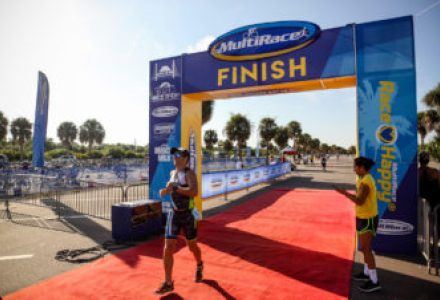

The previous post was a review of the FD3 Triathlon Series as if it was a product. Below you will find a more detailed account of my personal experiences during the race. Let me know in the...
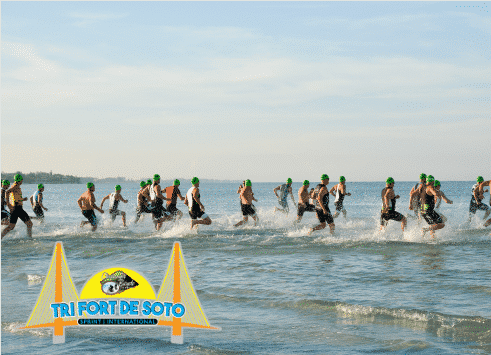
FD3 FLORIDA TRIATHLON INTRODUCTION The event company Multirace, holds numerous running and Florida triathlon events, and recently has planned an event in Habana, Cuba. The Multirace...
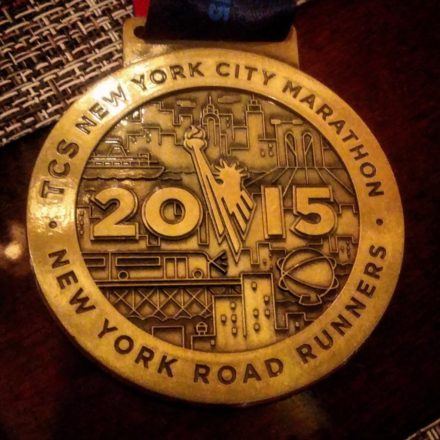
If you didn’t have an opportunity to read the epic writing in the previous post, I discussed the reason “why” I ran the NYC Marathon, then I highly recommend that you do. Not just because the...
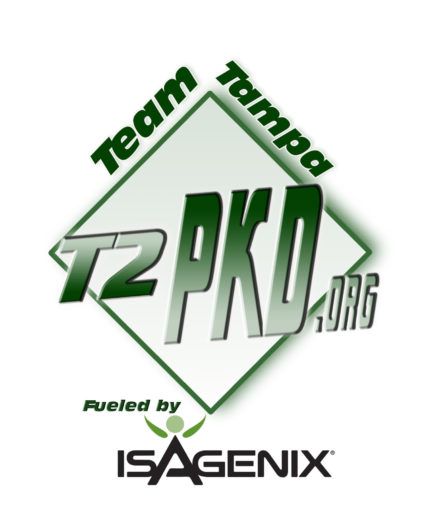
My Why - PKD The human brain is an advanced computer that controls many different systems. The body is like a room full of servers each independently managing a different system with one major...
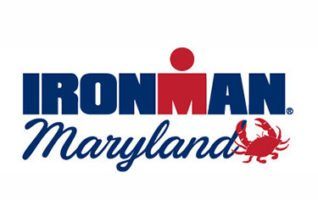
IRONMAN Maryland Part 1 I signed up for Ironman Maryland initially due to the reviews that said it was fast, and beautiful. Jaime started it with all the hype about it being a fast flat bike course...
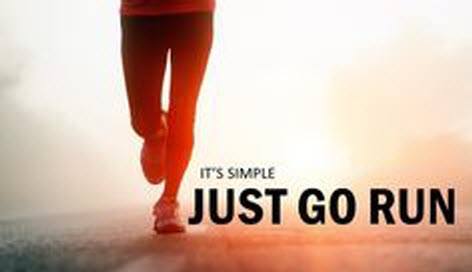
Happy Hump Day! Workout Wednesday’s will consist of favorite workout of mine that I either have prescribed to my clients or have been assigned by MY Coach. It might also be a favorite of yours. ...
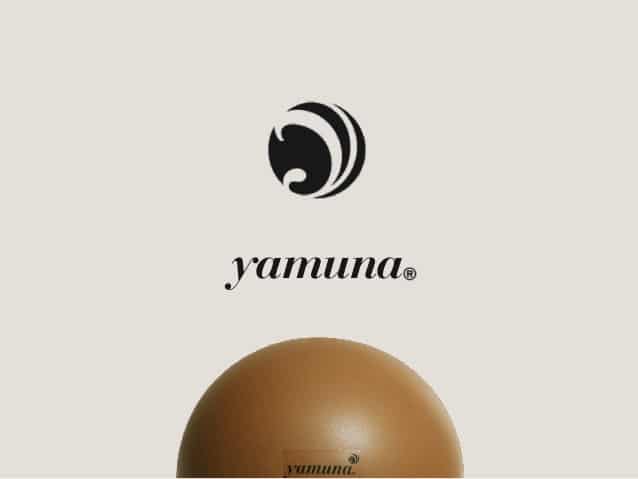
 Being immersed in the fitness industry provides me with a ton of different opportunities to experience different techniques, methodologies, and products. I recently had the privilege of a one-on-one demo of the Yamuna® body rolling technique that focuses on myofascial release.
Being immersed in the fitness industry provides me with a ton of different opportunities to experience different techniques, methodologies, and products. I recently had the privilege of a one-on-one demo of the Yamuna® body rolling technique that focuses on myofascial release.
Most runners, triathletes and other endurance athletes tend to neglect recovery. Why? Well, let’s face it, it could get kinda boring. Yoga classes are slow-moving, pose-to-pose movements, and foam rolling isn’t done at the break-neck pace we prefer. But, if you have ever been injured, one of the first questions asked is “would it have happened if I spent more time stretching and recovering?” The answer is commonly “Yes”.
Yamuna® body rolling is another technique to incorporate myofascial release into your fitness regimen. Myofascial release is basically a technique that provides stretching, compression and sustained pressure into restricted areas of connective tissue in the body to eliminate pain and restore motion.
Benefits of myofascial release techniques like Yamuna Body Rolling include:
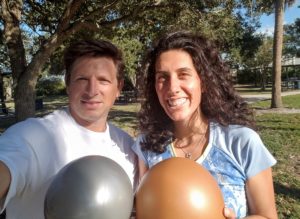 I had the pleasure of meeting Emily Stein, Certified Yamuna® Body Rolling Practitioner, and Personal Trainer who specializes in flexibility and mobility training using soft medicine balls and Active Isolated Stretching, located locally here in Tampa. She put me through a thirty-minute hands-on demonstration of this technique which uses different sizes of synthetic balls instead of a tubular foam roller.
I had the pleasure of meeting Emily Stein, Certified Yamuna® Body Rolling Practitioner, and Personal Trainer who specializes in flexibility and mobility training using soft medicine balls and Active Isolated Stretching, located locally here in Tampa. She put me through a thirty-minute hands-on demonstration of this technique which uses different sizes of synthetic balls instead of a tubular foam roller.
My mention of my tight hamstrings queued Emily to start my demonstration of the Yamuna® Body Rolling technique with my glutes. I sat on a medium-sized ball and rolled the ball slowly and deliberately throughout the range of my gluteus muscles and then slowly crossing down in my hamstrings.
Personally, I don’t use a foam roller, I use a PVC pipe because I enjoy pain. Well, not really but I find that it triggers more nerve receptors signaling where I need the release. Not that I have not used a foam roller. I have. I understand the use of a softer medium as it tends to mold to the area being worked on. The balls do the same thing, but because they are even softer than a foam roller they are able to cradle the muscle thereby triggering the release of more of the connective tissue. At least that is what I was experiencing.
Emily demonstrated not only the self-recovery techniques but also her incorporation of the Yamuna® balls into her personalized individual service. This one-on-one service where she uses her hands in concert with the Yamuna® Balls stretches deeper into the meat of the muscle while releasing of the connective tissue.
 It was eye-opening how the balls release different points that are the foam roller is unable to target. Rolling around in a circle versus a linear motion, allowed by the Yamuna® Balls, signaled more points needing of release, in my opinion.
It was eye-opening how the balls release different points that are the foam roller is unable to target. Rolling around in a circle versus a linear motion, allowed by the Yamuna® Balls, signaled more points needing of release, in my opinion.
I am sure you can see how the Yamuna® Body Rolling technique is advantageous to runners and endurance athletes. The pounding we put on our bodies causes all sorts of issues with not only muscles but our connective tissue. Just for this reason, I continually suggest incorporating massage, by a licensed massage therapist, at least once every two weeks. This technique, in tandem good stretching sessions, or yoga, will be beneficial in-between visits to your Licensed Massage Therapist.
It is, at the very least, worth a try.
If you would like to schedule some time with Emily Stein, or just inquire for more information, you can contact her through her website at www.rollforfitness.com. Emily helps people who need to and want to improve their movement.
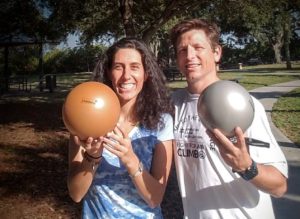
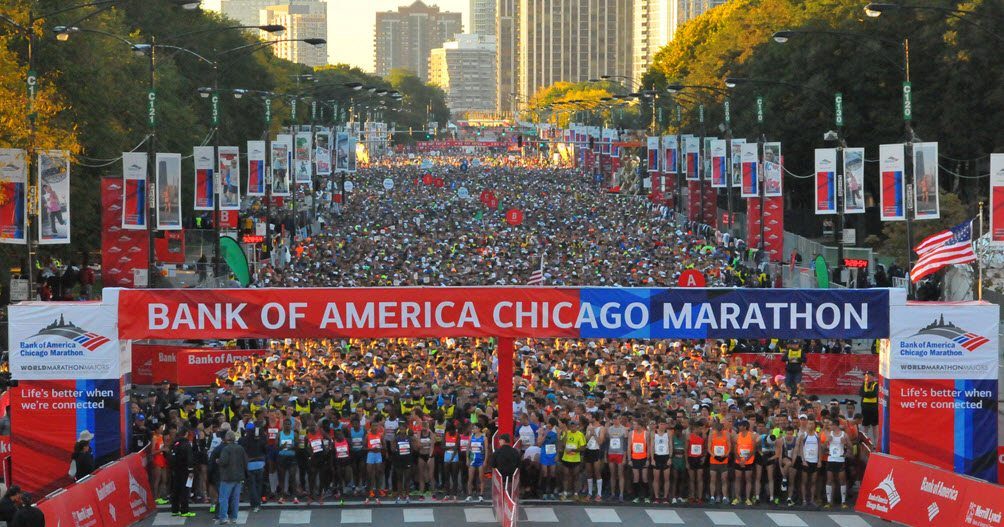
The Chicago Marathon provides an excellent course, plenty of support and, for me, a chance to visit home for a few days. It was no different for me this time, with one small factor. I was not nearly as trained for it as I should have been.
In my previous recap for Ironman Augusta 70.3, I detailed a very painful half-marathon run. It left me deeply concerned running the Chicago Marathon. The focus for the following two weeks was on recovery. My runs were limited to the Zero-to-5k course I coach at Tampa General Hospital which came to a total of eight miles.
Meanwhile, I completed a thirty-minute session with the foam roller and dynamic stretching, coupled with at least one twenty-minute session with an Electronic Muscle Stimulation machine from Therapeutix. I followed this routine almost every day.
Even with the focus on recovery, I still had issues with my calves and Achilles tendons in both legs. My concern for finishing the Chicago Marathon did not change as I stepped off the plane on Friday, October 7th.
I visited with my parents in Bartlett, a suburb located about 20 miles west of downtown Chicago, on Friday. Saturday, I utilized the local train system, Metra, for transportation into the loop where I checked into the Kimpton Allegro Hotel and made my way to meet up with friends before heading to the expo.
Pete, Kari, Maria, Danny and I had a bountiful breakfast at a local diner and proceeded to grab a couple of cabs to the McCormick Place Convention Center for the expo.
I am always amazed at the smooth flow that is set up for the Chicago Marathon. I stepped up to a table where they scanned the QR code that was emailed to me. All of my information promptly displayed on a monitor. After verifying the info was correct, a booth number appeared and a volunteer directed me to that specific location.
Even though the area was mobbed by runners, loved ones, volunteers and staff, I was able to quickly make my way to the booth where the volunteer already had my packet waiting for me. She verified my identity with my driver’s license and directed me to the main hall where I fought the crowd to the back. Within a couple of minutes, my gear bag and t-shirt were in my hands.
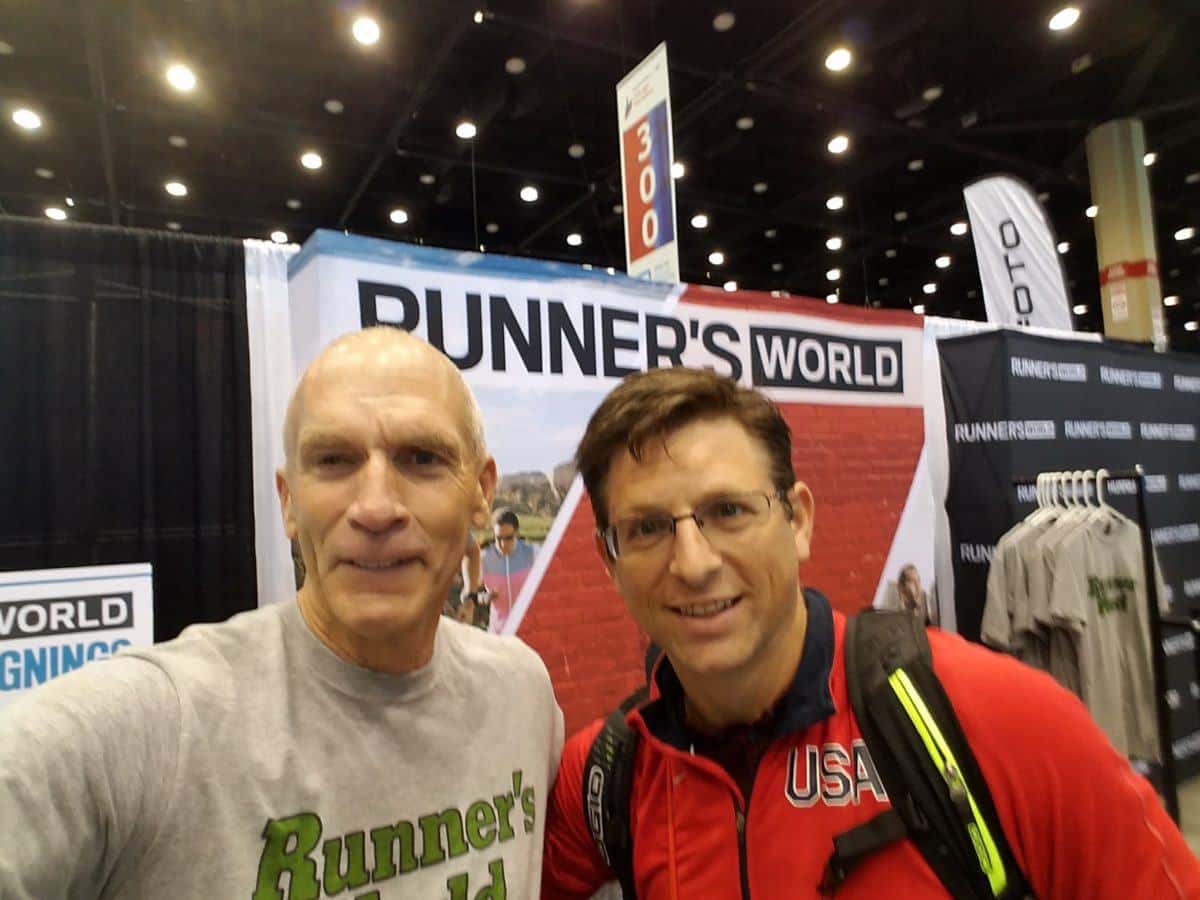
Bart Yasso with Coach Brad
With the requirement for check-in complete, I was free to wander around the expo. The Chicago Marathon expo is always a highlight for me. It is by far one of the biggest expos I attend with a plethora of vendors and products.
The nagging calf and Achilles tendon still had me worried. I risked breaking one of the number one rules for big races. Never anything new on race day.
Hoka One One claims performance and high cushion without sacrificing proprioception. As one of the first on the east coast to review Hoka One One a few years ago, I felt their technology may aid my finish the following day.
Other reviews led me to the Clayton. The middle line of their cushioning but extremely light. Slipping my foot into the shoe, and immediately the feeling the wider toe box and soft EVA foam positively indicated this approach was the right decision.
I palled around with my friends for a while, before I noticed the time. It was 1:00 PM, which meant the Ironman World Championships had already started. I excused myself and headed to the hotel. I spent the rest of the afternoon, with my EMS machine and tablet watching the race in Kona.
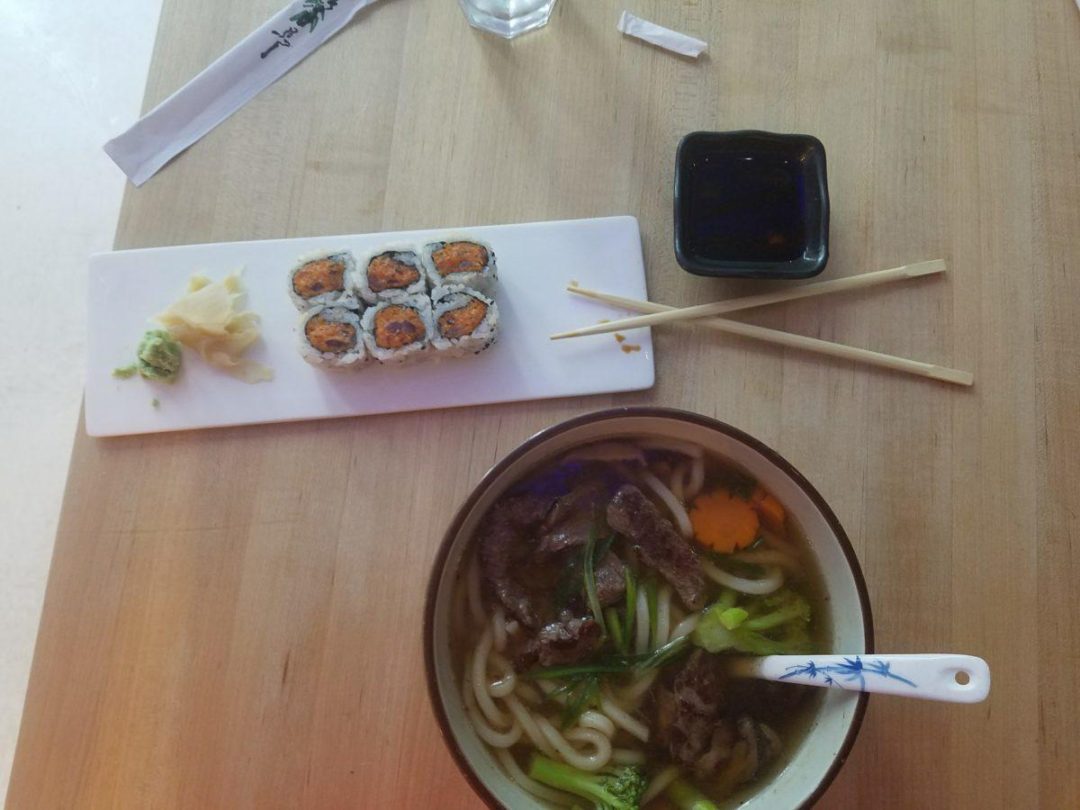
Later, I met up with Pete and the gang at Ryo Sushi. Dinner was a great combination of carbs, good fats, protein and extra sodium hidden in a spicy tuna roll and beef udon. After the hugs for luck and “good nights” it was a quick walk back to the hotel, a gear check followed by some light reading before entering dreamland.
The next morning, I awoke refreshed and ready to face the day. Anxiety plagued my core as it usually does prior to a big race. However, this time it was heightened slightly with worry due to my lack of volume, and the tightness in my lower legs.
My consumption of oatmeal and a power bar settled the hunger pains, as I dressed in my T2PKD singlet, shorts, socks, new Hoka One One Claytons and my Moxie Multisport hat. The temperature, estimated at 54 degrees, encouraged my purchase of a very inexpensive hoody and sweatpants which would keep me warm prior to the race.
All of the major marathons collect discarded clothes after the race and donate them to the homeless. After I shedded mine, these clothes would have a good home.
With that, I headed to the lobby, where after grabbing a cup of coffee and a banana, I took the 20-minute walk to Grant Park and the “E” Corral.
Right around 7 am I entered my official Chicago Marathon corral. After 30 minutes of chatting up some runners from the Ronald McDonald House Team, and an operatic version of our national anthem, the gun went off. It took 14 minutes to reach the start line, and we all began our 26.2 mile journey.
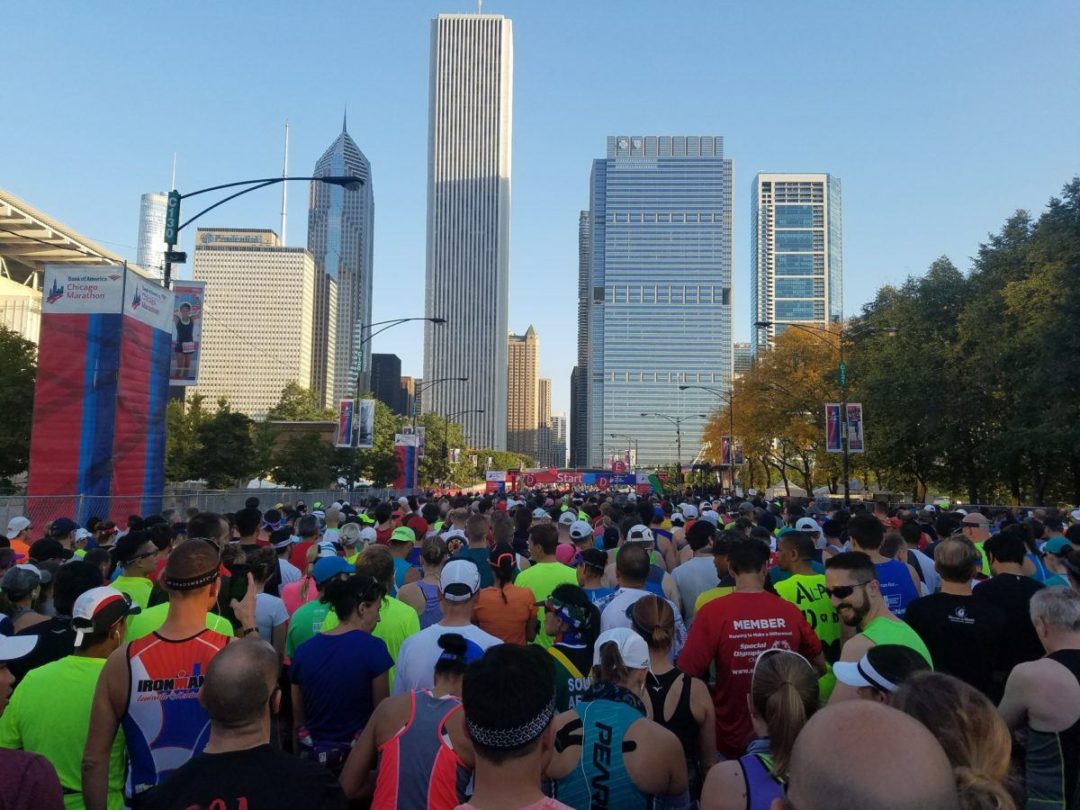 With all my concerns, I did not start the race without a strategy. Even though I kept hearing Coach Jon in my head telling me, that there was nothing to worry about, and that I had enough experience in my legs to finish the marathon, I still didn’t want to go in strictly by feel.
With all my concerns, I did not start the race without a strategy. Even though I kept hearing Coach Jon in my head telling me, that there was nothing to worry about, and that I had enough experience in my legs to finish the marathon, I still didn’t want to go in strictly by feel.
Using past data, temperature, results and a bit of feel, I put together a simple strategy of allowing my legs to do what they wanted in combination with brisk walking through the aid stations. I told myself that no matter what I would walk every water stop from the first flag to the last flag and then run again. Therefore, looking at the pace on my watch would not be positive. I would check very infrequently the total time, but otherwise, I would use the clocks on the mile markers to figure out my timing.
This Chicago Marathon strategy also included a return to my “Happy Place”. The past few months had been a draining journey of mixed paces, disappointments and workout failures that deprived me of everything I loved about running. I needed a win, but more so I needed that peaceful euphoria that kept luring me back to this sport I loved. That feeling of freedom that I continually coach in my students and clients.
The first mile was a little faster than I intended, so I slowed down a bit for fear of hitting the wall way too early. Passing my mile 3 I realized that even with walking twice I was running slightly faster than a 9-minute mile. This revelation amazed me. I truly anticipated more of a ten to an eleven-minute mile, being as I did not have the training volume. To be running so easily at this speed, was a confidence booster, to say the least.
Everything seemed to be rolling along just fine. For the majority of the race, I was listening to a custom station on Slacker radio, calculating times, chatting with runners and just enjoying the familiar sights.
My times consistently were 9-minute miles, so I decided to modify my strategy to include just that. The test would be what would my half marathon time be. The voice inside me kept insisting I had at least a half marathon in me. However, the test would be afterward. In the meantime, I needed validation that I could sustain this strategy for at least half the race.
At the 13-mile mark, my the clock read 2:08. Of course, I started 14 minutes behind the first wave, which

meant that my time was actually 1:56. I did it. Sub two-hour half marathon and I still felt strong.
Assessing my body after that, I only noticed some slight tightening of my hip-flexors. Everything else felt great.
As I passed mile 16, I was still amazed at how I felt. I still stuck to the strategy and had not walked except for where planned.
My quads and calves started to tighten up a little more at the 18th-mile aid station. I felt it more passing the last flag of the aid stations when I re-started running. To be honest, I expected it earlier than that.
The real pain hit at mile 21. My quads screamed, my hamstrings ached and my calves were on fire. I kept fueling with what was on the course, which luckily included some bananas. The potassium seemed to relieve a little of the pain but not the tightness.
With 4 miles left to go, my inner dialogue argued with me from aid station to aid station. It expressed I needed to walk for a bit, however, the idea that I could run a sub-4, intrigued me, so I continued on.
At the 35k marker, I noticed my slow down to over a 9-minute mile. I would have to go sub 8:30 to finish under four hours. The uncomfortable tightness and pain in my lower extremities expressed that it was not realistic. However, that argument did not include seeing how close I could come.
The 24-mile marker did include an extra 100 yards of walking before the need to complete this challenge took over. My inner thoughts reminded me of the final miles of my completed Ironmans. Everything hurt, but the desire to cross the finish line, triumphant, began overwriting the pain signals to my brain.
 I picked up the pace a bit at mile 25. The pain was intensifying. Luckily, so was the perseverance, and the reminders of all the times encouraging clients, to run through the pain. That it isn’t about knocking down the obstacles of life. It was about how many obstacles life could throw but to still keep moving forward. The pain was just another obstacle.
I picked up the pace a bit at mile 25. The pain was intensifying. Luckily, so was the perseverance, and the reminders of all the times encouraging clients, to run through the pain. That it isn’t about knocking down the obstacles of life. It was about how many obstacles life could throw but to still keep moving forward. The pain was just another obstacle.
I turned the corner and my legs turned over a little faster identifying the sign practically yelling at runners, “400M(meters)” to go. All I could think is one, more time around the track and it’s over.
The 300m sign also brought the finish line into my view. At that point, all the pain just went away. It was over. I crossed the finish line with my arms up in the air. I did it and just slightly over four hours. Final time: 4:04:17
Limping through the chaos of the Chicago Marathon finish, I realized that even including the worry and pain, this experience was amazing. While the people, runners, and logistics were all wonderful, it was my internal struggle that made it great.
[one_half_first] [/one_half_first]
[/one_half_first]
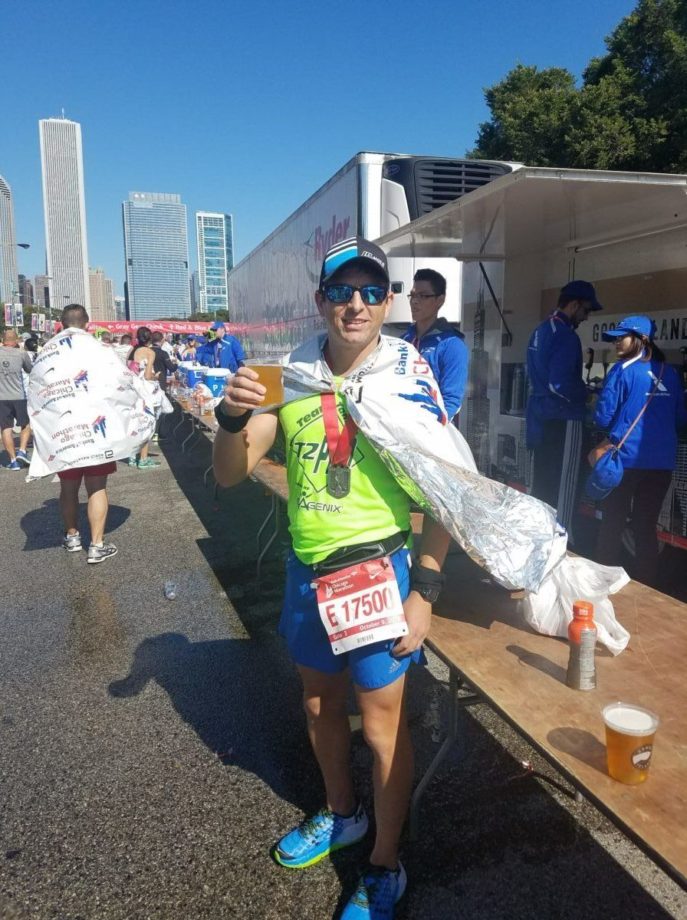
Carpe Vitam! (Seize Life)
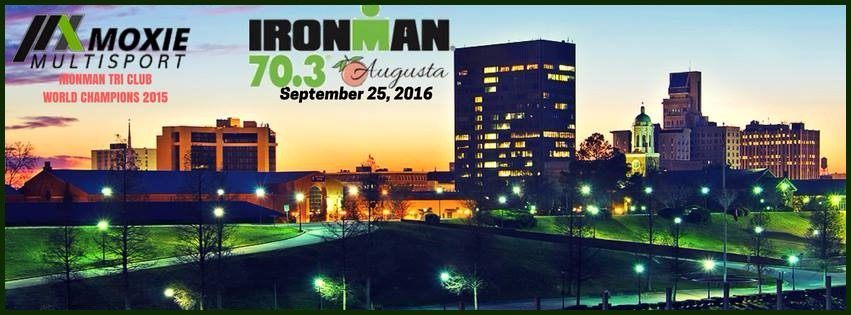
September 25 was going to be my day. The Ironman Augusta 70.3 triathlon was finally here. The race I had been training so hard for on one of my favorite courses. It was four-and-a-half months since Ironman Chattanooga 70.3 and I was going to be ready to get my vindication and PR like I never had before. This was going to be my glory day. I knew it.
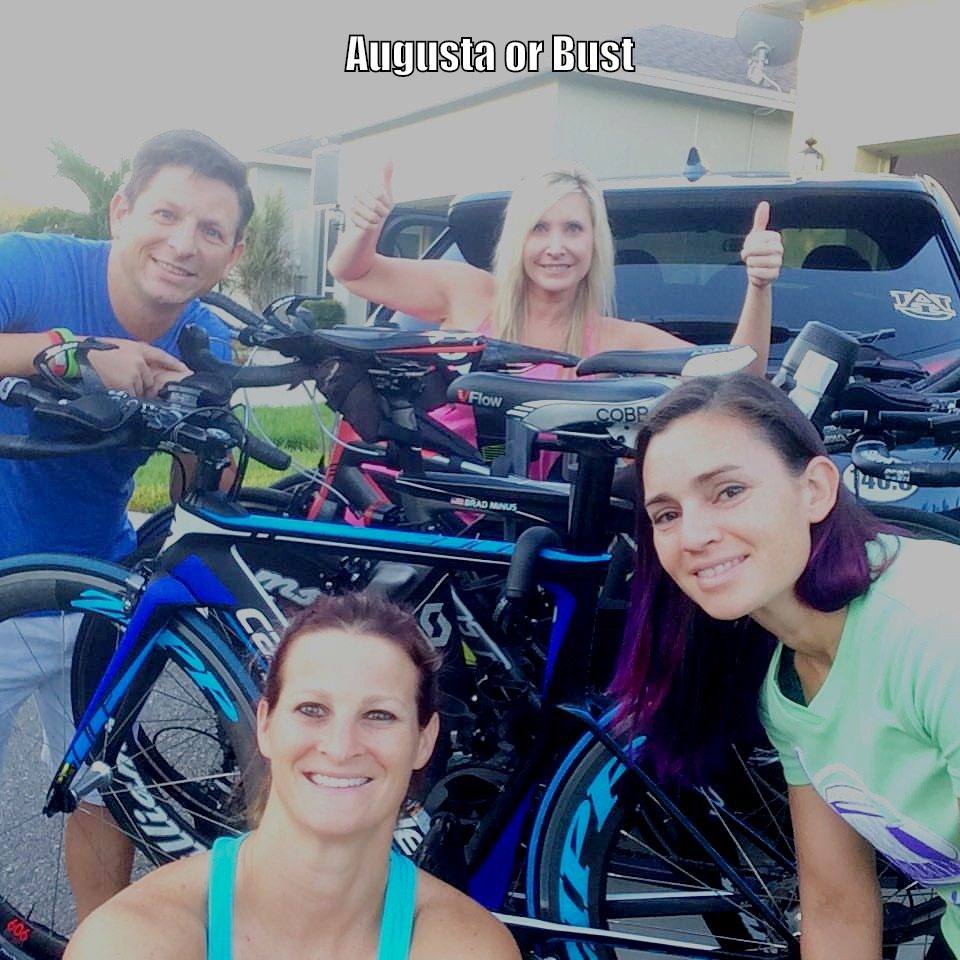
Driving up from Tampa, was a piece of cake. I had the presence of some beautiful and talented athletes; Maria Lopez Vijayanagar, Nancy Hepner, and our own personal driver, Jamie Breibart. Between awesome conversations, laughing and completing some work, the time flew by. Before we knew it, we were pulling up to the Marriott Hotel which housed the Augusta Convention center.
This was the first time ever, I stayed in the Ironman Augusta 70.3 host hotel. Actually, it was the first time I ever stayed in a race’s host hotel and I was excited.
The pounding of my pulse intensified with every step we took towards the expo. Check-in was a breeze especially on Friday afternoon since most of the athletes would probably wait until Saturday. The next thing I knew, I had my cool new swim bag containing my packet, t-shirt, and swag. A few moments later, I was standing in line to buy the traditional extras. Some athletes always get that year’s t-shirt, some pick something different every time, I get a coffee mug and water bottle with the race logo.
The vendors that provided booths were of the same variety as usual. Cliff bars, a local gear shop, BASE salts, a new pet food sponsor, and of course my friend Scott Rigsby with his foundation.
I have mentioned Scott in a few other posts. He was the first double amputee to finish the Kona World Championship Ironman. He went on to form a foundation to help soldiers with disabilities; The Scott Rigsby Foundation.
With that completed, we headed down to Mellow Mushroom for some much-deserved carbs to include one of our favorite carbohydrates. BEER. Craft Beer because I am a snob like that. If you ever get to try their Mega-Veggie pizza, go for it. It is magnificent, especially if the tofu is traded out for avocado.
After a long conversation at the bar that included my last drink before the race, it was time to get a good night sleep.
That, unfortunately, didn’t happen. Two nights prior I always prescribe a good nights sleep and only awake when the body is ready. This allows for maximal recovery for race day with ample healing of any inflammation.
I have no idea why. but sleep evaded me most of the night. I still felt rested upon getting out of bed around 7 am, but not as much as I would have liked.
It was a toss-up of whether to go and jump in the river with our wetsuits or not. Nancy had never swum in open water with a wetsuit and was nervous about the swim. I was also anxious to jump in to get a feel for the temperature and if my wetsuit was still functioning properly, so we headed down to the swim start.
We suited up and jumped in. The temperature was a little chilly at first, but within ten strokes it felt glorious. The current was running about 2 knots, so my strokes to the first buoy felt like slicing through butter.
Jaime and I waited at the first buoy while Nancy caught up to us. Her boyfriend Hans had arrived the night before and being a marathon swimmer, he was incredibly comfortable in the water. He talked her through jumping in and they met us at the buoy.
We splashed around and played like kids for a few minutes before we decided to head back. Now that was work. It was like swimming on a treadmill. We ended up swimming to the side and shimming up the dock instead. Funny thing was there was no way to use your legs to get on the floating dock. I muscled myself up and then brought up Jamie, Hans and finally Nancy. That was an experience.
To make matters worse there was a locked gate in front of us with nothing on either side except water. We had to carefully hang on the outer chain link fence to get around the locked gate door. It was like a pre-70.3 obstacle course.
With Nancy now comforted with the buoyancy of her wetsuit, and a real confidence booster for myself, we headed back to the hotel to get a quick ride in.

Maria and I headed out and on Broad St for about a mile when I heard Oscar Alvarez, a teammate from our national team Moxie Multisport, yell from the Holiday Inn. I have never had the chance to ride or even get to know Oscar so I was excited when he flagged us down. Donna Adams also joined us, from Moxie, as we headed out of town for about 15 minutes. We turned around and headed back.
I toggled through all my gears to include my small chainring knowing that there were some new hills added to the course. Everything seemed to work very smoothly, which just increased the intensity my excitement.
After dropping off Oscar and Donna at their hotels, Maria and I pedaled back to pick up Nancy and Jamie. I completed attaching the stickers on my bike and changed into regular shoes for the jog back. I, unintentionally, put my debit card and license in a bento box on my bike, and we headed out.
Again, things went very smoothly. We rode right in, racked our bikes and headed out. I had a pretty good position sitting almost the very middle of the transition area, just a few positions to the left of the aisle.
It didn’t seem like anyone wanted to jog back, and I was ok with that. However, about half-a-mile out, I remembered that I had my credit card and license on my bike. I gave my helmet to the ladies while telling them I would catch up and I started running back to transition.
This is the first season in seven-and-a-half years I have had any type of injuries. Earlier in the year, I was suffering from a stress reaction in one of my right metatarsals and lately, I had been suffering from some Achilles tendinitis. It was so wonderful to run and not feel any of that pain.
Running into transition I caught the site of April from my local team, Outspokin Multisport. I stopped and chatted for a quick second before continuing on to rescue my stuff. Confidently, I ran back out feeling really strong. I was lucky to run into two more Moxie teammates, Josh Otstot and Alex Bautista before finally catching up to Maria and Jaime.
The confidence was brimming with me throughout dinner at a local sushi and hibachi restaurant. I had rice, chicken and little sushi to fulfill my balance of carbs, protein, and good fats.
Fueled and completely prepped for the race, I fell asleep and remained in restful slumber until the alarms went off at 4:00 am.
Ironman rotates the start waves of their races, in order be fair to all of the Age Groups. In other words, while one year the 45-49 age group might be in an earlier wave, the following year that same group would be scheduled later. This year my age group was starting later at 8:28 am.
Since we didn’t need to travel to transition to setup race-ready, we dressed comfortably and headed out to the buses to be transported to the transition site.
Over the years, my experience in setting up my transition has been drastically reduced. I now can do a full setup and walk-through in just a few minutes where before it would take a lot longer. As I started placing bottles in the cages I noticed my rear tire was completely flat.
While a lot of athletes would consider this bad luck, I was grateful that I found it now rather than on the course. Not to mention, there was a maintenance crew here that would be far faster at repairing it than I would.
As it turned out, I was correct in that assumption. I handed the mechanic a tube, and they pulled my back wheel, changed the tube to include adding an extender, returned the wheel to my bike all within just a few minutes. With that, I was set up and ready to rock n’ roll.
Announcements flooded the air during our setup time in transition, of which most were normal except for the one big kicker.
“We are making history today. For the first time in Ironman Augusta history the swim will be not wet suit legal for age group awards.”
This was a little bit of a surprise. This was one of the reasons I loved this race. I am not the fastest swimmer but allow me a downstream swim in a wetsuit and I can hold my own. Unfortunately, now I just lost one of my advantages.
All the way back to the hotel, I took part in a lot of self-talk. Telling myself, that I had done the distance in the pool hundreds of times, and as the river was fresh water that is all this was. I also still had the advantage of the current which was moving between 1.5 and 2 knots. Not to mention, my transition time should be faster.
This calmed me down, as we headed back up to the room to prepare for our start times.
My breakfast of oatmeal, a banana, a cliff bar, and coffee went down easily as my anxiety slowly started to grow. I rolled out my legs, did some dynamic stretching, dressed, and headed over to Jaime’s room to pass the time before heading down to the swim start.
At 7:30 we walked down to the swim start as Nancy had an 8:04 start time, followed by me at 8:28, and Jaime at 8:40. As this would be Maria’s last race in the Pro division, she was already on the course.
I was pushing all of my positive energy to the forefront of my mind for Nancy. She was comfortable in the water during our test swim the previous day and while she could’ve still used her wetsuit, it would have meant starting at 9:30. With the temp already at 77 degrees that would have been for an even hotter race. I applauded her for deciding to go without and starting with her wave.
Before I knew it I gave hugs to Jaime, a number of other friends and teammates, and was in line with the rest of my age group.
At 8:24 the staff moved us to the dock where we would start. Usually, there is a rope start-line ten or so meters from the dock. This year they wanted us to start touching the dock. Due to the number of triathletes in my group, there was not enough dock to allow everyone a water start, so I was forced to stand on the dock and jump in when the horn blew at 8:28.
As I jumped in, the cool water prickled my skin as I surfaced and started my stroke. The anxiety completely wore off, and my heart rate decreased when I found my rhythm. I kept my mind quiet, focusing on reaching as far as I could while driving my hip down pulling myself through the water like a ladder.
I have written and said before, I am not the fastest swimmer by far. Actually, I am downright slow, but I have been working on it every season. You can imagine my surprise when I reached and found a foot there. I couldn’t believe it either, I caught someone. There truly is a first time for everything.
As I was maneuvering around the swimmer and was surprised again by a kick to my hand. Then I was boxed in a group and I thought, “This is great, I can just hang in here and take advantage of the draft.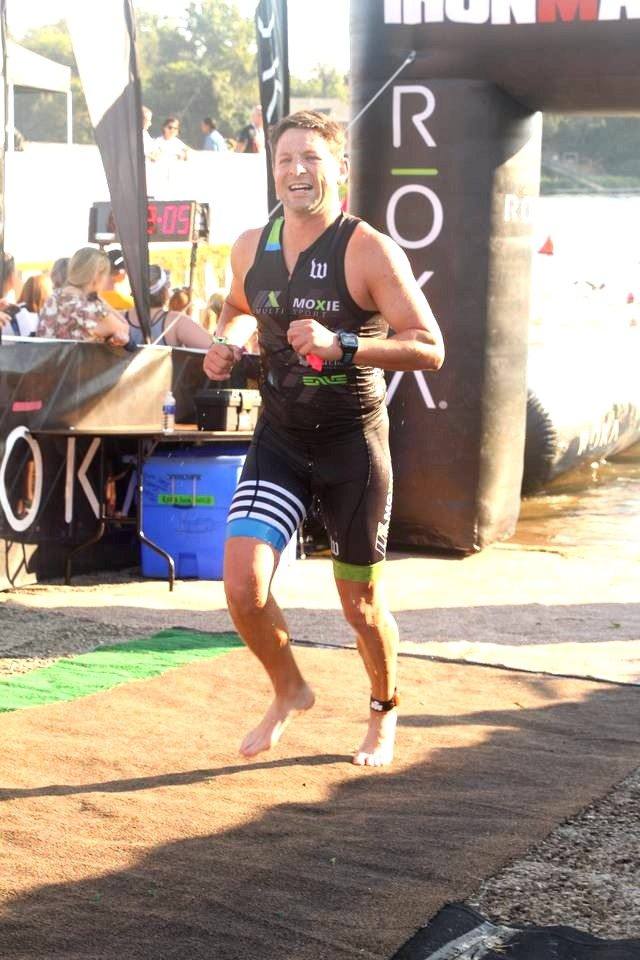 ”
”
Unfortunately, that didn’t last. The athletes on either side of me started swimming into me, throwing off my rhythm and the athletes in front slowed down so I was now getting kicked in the head.
I pulled back into a breaststroke and swam out of the way. It took a minute or so to get my breath and site line back so I could find my rhythm again.
Unfortunately, I experienced a similar scenario a little while later, with me resolving it in the same fashion. I was feeling a little peeved, but on the other hand, I was fascinated that I was forced to pass some of my fellow age group athletes in my weakest event.
With a huge smile on my face, I pulled off my cap and goggles as I ran into transition. I looked down at my watch and saw 34 minutes and change. That was a PR for me, not by much, but gave me a huge energy boost crossing the mount line as I began the bike portion.
This season was all about the bike. I have been focused on increased efficiency and speed on the bike during my training and my earlier results have proved that it had worked.
My ride felt like silk on the early portion of the bike. The derailleur was moving through my gear changes like butter, my goal power was ranging perfectly between 180 and 190 watts and my speed was a consistent 22 mile per hour. I felt like I was unstoppable.
The first set of hills uneventfully came and went without any kind of changes in effort level. The excitement was radiating from me because everything seemed to be coming together. I stuck to my nutrition plan and wattage like glue and just kept passing people.
 Another set of inclines came around mile 38. These were the grade of hills that bring your speed down to 9 miles an hour. I kept a cool head knowing that what goes up, must come down and I would make up the speed on the decline.
Another set of inclines came around mile 38. These were the grade of hills that bring your speed down to 9 miles an hour. I kept a cool head knowing that what goes up, must come down and I would make up the speed on the decline.
At mile 42, I noticed my time. Big Mistake. All of the sudden I was concerned that I was under 21 miles an hour of which I was consistent for the ride prior. Had I really slowed down that much? My goal was 21 mph, and I was thinking it was conservative. It would allow me to finish the bike in 2:39, but now that goal was in danger.
Around mile 45, I started to feel a little sluggish, so I took an extra gel and finished the formula in the current reservoir. Unfortunately, it took awhile for my digestive system to process the extra calories, as the following five miles felt very slow.
The last five miles were either downhill or pretty flat. I was consistently riding between 22 and 23 MPH, but it wasn’t enough. I rolled into T-2 in 2:48.
Just prior to the dismount line, my thoughts went to the run. I had decided I just needed to pick-up the pace 15-20 seconds for a few of the miles and I might just be able to make a lot of it up. Even if I didn’t hit my goal of 5:17, I would still PR.
I was ready to hit the dismount line running into T-2, but when swung my leg over my seat a pain in my hip almost made me fall. “What the hell?” were the words that came out of my mouth for everyone to hear.
I tried to run my bike into T-2, but they would not move. My legs just refused to do anything other than walk. My thoughts drifted to other races and my internal dialogue was encouraging reflecting my previous history of my legs waiting to transition at mile 3.
I changed my shoes, grabbed my race belt and hat and headed out, with a brief stop at the portlet. I tried to jog a little, but a stabbing pain was radiating both hips, so I walked very briskly. No problem, I strategized taking in a little more salt, some water and jogging to mile 3 where my legs would magically open up and I would finish around 2 hours. The goal not reached but still a PR.
Unfortunately, it never happened. Mile 3 came and went with me running slowly for a tenth to a quarter mile before having to walk. The pain radiating through my legs while running, but disappearing while walking.
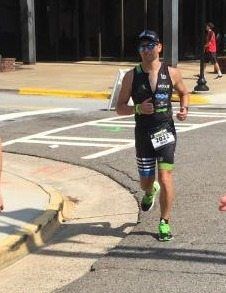 I went back to my training. Asking myself what I thought was happening physiologically. Tracing the muscles radiating from the hips, and assessing each individual pathway. I was at a complete loss. I had no idea what was going on.
I went back to my training. Asking myself what I thought was happening physiologically. Tracing the muscles radiating from the hips, and assessing each individual pathway. I was at a complete loss. I had no idea what was going on.
Over the next few miles, I did everything possible to go from aid station to aid station stuffing ice down my shorts trying to numb my hips. Unfortunately, the temperature and humidity were increasing as well. I didn’t feel like it was really that warm, but I noticed all the walkers.
The last four times I did this race, there were finishers that walked, but I didn’t recall the immense number of walkers I was noticing. There were more athletes walking than running. It didn’t make me feel any better, but there was definitely something going on.
The first time I completed Augusta I recall it being even hotter, but not nearly the amount of walkers I was noticing this year.
The rest of the run was more of the same. a quarter to a half mile of running and then I walked until the pain subsided. I was constantly making deals with myself to run just a little longer each time.
After 2 hours, mile 10 was the marker I was finally able to surpass feeling completely defeated, angry, in pain and embarrassed. I was doubting everything I ever learned, my ability as an athlete and as a coach. If I couldn’t get through a 70.3 in less than 6 hours what right did I have to coach other people?
When I finally turned the corner towards the finish line, Maria, Jaime, and Hans all had their cameras or phones out. I was trying to signal to them not to take a pic because I felt so ashamed.
Crossing the finish line was completely anti-climactic as my watch blinked 6:16. The slowest time since my first 70.3. I didn’t care about it and I almost passed up the people handing out the medals. At the time I am writing this I still have not hung the medal on my wall with the others.
I grabbed a coke from the food tent and proceeded to find Jaime, Maria, and Hans. We watched Nancy run by just prior to the halfway point, cheering her on and encouraging her to keep moving forward.
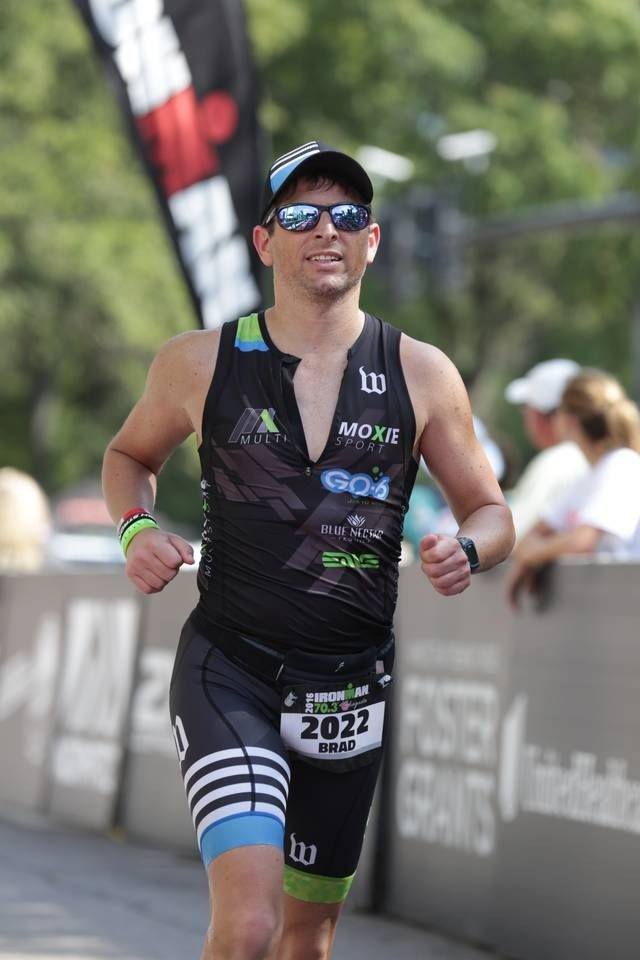 After that, I followed Maria back to the hotel and we chatted. She expressed her disappointment with her race, especially the run. I tried to be upbeat, but my thoughts were very negative. I really don’t like being that way. It makes me feel weak.
After that, I followed Maria back to the hotel and we chatted. She expressed her disappointment with her race, especially the run. I tried to be upbeat, but my thoughts were very negative. I really don’t like being that way. It makes me feel weak.
I left the celebration early that night and went back to the room. I packed and escaped into the mindless abyss of television just wanting the day to be over.
Over the next days, I reviewed the race, trying to resolve my issues on the run. I realized there is one crucial element of my training that I neglected this season. Massage.
In the past, my regimen included regular visits to my License Massage Therapist. That habit has been occurring for every season of training for five years prior. I completely neglected this avenue of my training this season. Was this the answer? I have no idea, but I will be taking that lesson and integrating back into my routine.
The release of negativity was a relief since returning home. My coach, Jon Noland, always says the best thing an athlete can have is a short-term memory. I have taken the lessons from this race, and now I am moving on to my next challenge.
CARPE VITAM!

I have been an endurance coach for some time now. Once in a while, I receive an email from a client which chokes me up with pride. Today, I received one of those letters, so instead of sharing it via a Facebook post, I decided to copy it here.
“Hello, Brad,
To reflect for a moment – It’s been about a year that you’ve been my coach. I have learned so much more than I ever would from a book, hanging out with colleagues, or trying to figure it out by myself. When I met you, I had been trying for years to run past 3 miles and frequently injured myself — I could never get past 3 miles was super frustrated, hated running, and I was very slow. In fact, none of my times in any of the sports were improving. After a couple of months working with you on form and technique, I tripled the number of miles I could easily run, I increased my speed and had absolutely no injuries. You have inspired me to try things I would never consider trying, regularly pushing me out of my comfort zone and helping me accomplish things I didn’t think were possible or I would ever have the guts to do (e.g., swim in cold water– you have no idea what a big deal that is– running a 10K, and riding in bike groups).
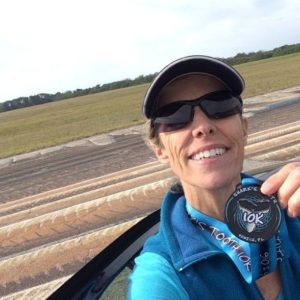
I felt like I couldn’t find anyone that would be interested in coaching me as an age grouper and being new to triathlon. Finding you was such a blessing because I feel like you treat me like a pro– you respect me for where I am, what I am trying to accomplish, and my repetitive silly questions (e.g. What is “PR?”). Your positive attitude is contagious and inspiring.
Everything you have taught me has been instrumental in reaching my triathlon goals and even helping me win the FD3 Series in my age group! That’s pretty cool! You’ve also worked around my schedule and needs to perfectly tailor the perfect program for me as an individual and because of that, I’ve gained improvement in running, swimming, and biking. I’m really grateful you don’t just prescribe a “one size fits all” approach– you related it to my personal needs.
I look so forward to our weekly calls, and knowing that someone is there holding me accountable, there to support me when I’m feeling discouraged, and perhaps more importantly, there to celebrate every success, no matter how big or small! It makes my day when I get random emails commenting on some aspect of my training. I can’t even begin to summarize how much I’ve learned from you. I’m constantly impressed by how well-informed and experienced you are– no matter how random I think my question might be, you always have an answer that is backed up by facts/literature/experience, etc.. Even when some random muscle hurts, your solutions have always worked!
I’m also thankful that you include the nutritional elements since that is a critical part of training and performa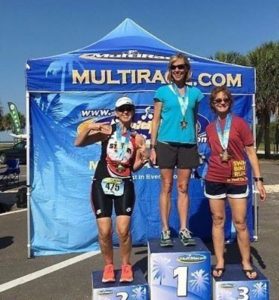 nce, as I’m slowly learning and trying to get better at communicating.. I had no idea how important all of this was.
nce, as I’m slowly learning and trying to get better at communicating.. I had no idea how important all of this was.
So, in about 8-10 months of working with you, I’ve tripled my running distance, increased my run pace by a couple of minutes, increased my bike speed by several MPH and have become a stronger, more efficient swimmer. I have completed two Olympics and several Sprints– without any injury! And it’s been a lot of fun, I’m totally hooked! I’m looking forward to the 70.3 journey (just one, I don’t have time to sustain that level of training!), and getting on the podium for an Olympic at some point ; )
I have complete trust in the process you are leading me through, and it is definitely generating results. I’m so grateful for who you are, what you do, and your passion.
So over time I say thank you– please know there is so much more behind just those two words– it’s hard to express all the gratitude and appreciation that is in my heart and mind. So again, thank you. ~ Laura”
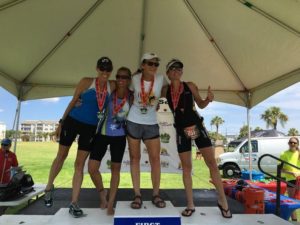
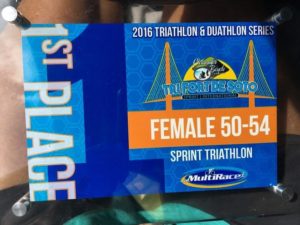
This was written by my client Laura Engleby whom just as she has detailed, took 1st in her age group in 2 of the FD3 Series Sprint Triathlons and 3rd in the last one. These accomplishments gave her 1st place for the series. She also took 4th in her second Olympic distance triathlon. She put in the work, took the prescribed suggestions and followed the plan we made for her.
I cannot even put into words how proud I am of this woman and what she has accomplished in the short amount of time I have been privileged to be coaching her.
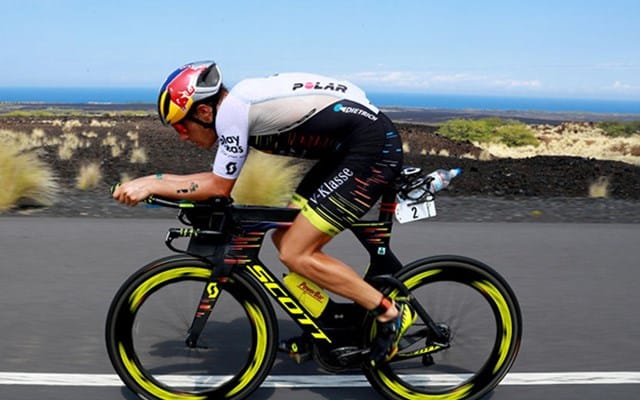
I found when looking for ways to get faster on the bike, is that there is so much information, from different coaches and experts, that it can be confusing and overwhelming. Personally, I enjoy having so much information as it allows me to try different methodologies to find what works for me, and for my client athletes. Here are a few ways to increase your speed on the bike, that in my experience has worked quite well.
How does a bike move? The circular motion of the pedals, right? How do you create that motion? You push down on the pedals which moves the crank in a circle. That is one way. The question would be, is that the most efficient and does it propel the bike with the full potential of the rider? Not necessarily.
Most novice bikers tend to only push down on the pedals as I mentioned prior. That is only half of it. One of the reasons most cyclists and triathletes use bike shoes and clip-less pedals is not only to keep feet firmly in place, but the fact that it allows for two points of power; Pushing down on the pedals using the quadriceps, and pulling up using the hamstrings. An effective analogy that helps to turn the grinder (push only) cyclist into a more efficient one, is imagining the full rotation of the crank as a clock.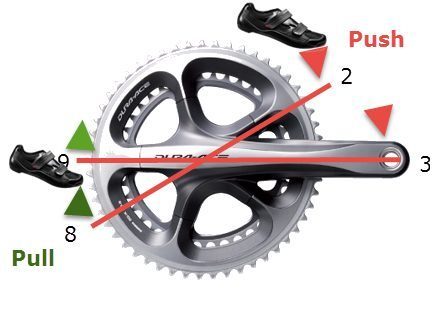
The penultimate, or switch, from push to pull of a single leg, might take place at the 9-3 or 2-8 positions. Be that as it may, every rider is different, so the penultimate may be different. In other words, as your foot rounds the 9 position, switch from pushing down to pulling up one foot while doing the opposite on the other. If you try this on your next ride, it most likely feels foreign. The best way to overcome that is to incorporate single leg drills into your warm up.
I prescribe my clients 100 single leg rotations on each leg with 1 minute of an easy spin in between as a warm up to every ride. This allows the initial leg to keep moving while receiving power from the opposite leg, and allow you to feel tension around a full rotation.
At first, you may feel a chunking in your stroke. That is just the crank telling you it does not have full tension all the way around the “clock”. Find a gear where you know longer feel or hear it and then continue with the exercise. Soon it will not matter what gear you are in. Finding that smooth, full pedal stroke will be an epiphany that will allow you to gain even more speed.
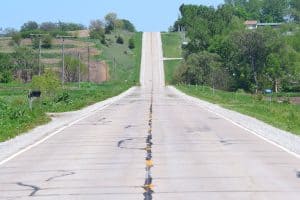 Ride Hilly Courses to Get Faster
Ride Hilly Courses to Get FasterEven if your event is flat, you will find an advantage to pedaling up hills. Steep hills will challenge your cardiovascular system while long hills will increase your strength.
A good amount of triathletes tend to fade away from doing hilly races because hills are a challenge. If only they would remember Isaac Newton and the law of gravity. What comes up must come down. While it might be a challenge going up, there is recovery on the way down.
Start with a flat course that includes a couple of short hills and ride it a few times repeating the hills. Then find an area that includes a loop or out and back courses that is mostly hills or a good combination, and add loops for a few workouts.
I do not suggest finding a group that does hills on a regular basis and jumping in without conditioning yourself to take on different lengths and grades of hills.
When I first started, I never thought to use the knowledge I gained completing track workouts would transfer it to the bike. I 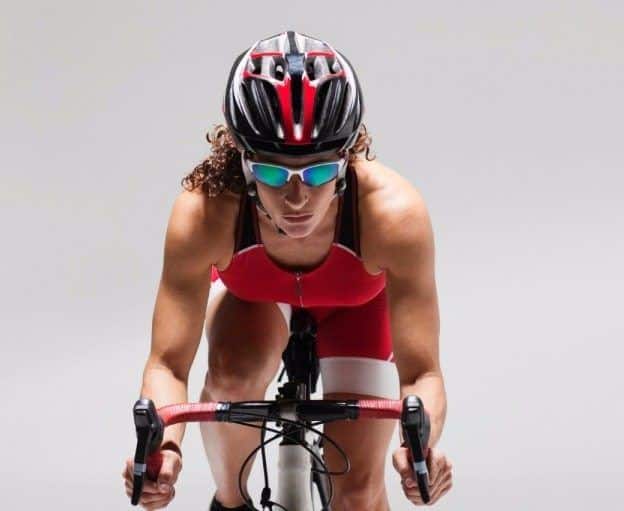 found that, for me, interval training, like on the track, it is one of the fastest ways to progress on the bike. If there is only one tip you take away from this article, take this one.
found that, for me, interval training, like on the track, it is one of the fastest ways to progress on the bike. If there is only one tip you take away from this article, take this one.
Intervals are designed to adapt other muscle fibers for use along with the main set of fibers. Endurance athletes engage slow-twitch, Type I muscle most of the time. By completing short bursts of high-intensity effort, the fast-twitch, type IIa, and IIb muscle fibers are integrated allowing us to gain their power for higher speeds.
Type IIa muscles can be utilized at the maximum for 2-3 minutes and type IIb only for about 30 seconds. How does this help? When these fast-twitch muscle fibers are used they increase the strength of the type I muscle fibers because they are not doing all the work for that time. The endurance muscle fibers are given some recovery allowing them to be used at a higher intensity later.
In-between the high-intensity intervals are high gear spins or low tempo efforts. The fast-twitch fibers can then recover as well. Fast-twitch muscle fibers can recover almost as fast as they are depleted.
My clients usually have been riding and completing at least six months of medium intensity workouts before they are prescribed Best Effort workouts. I suggest having a very good fitness base before attempting a workout like the one below.
Here is one workout I assign my clients:
Best Effort is just what it says. The fastest you can go for that amount of time without regards to the rest of the workout. You will find that each of the intervals will be slower than the interval prior. If it isn’t, then you did not truly go all out or in other words, give your best effort.
I started training with power two years ago, and it has helped me get faster on the bike not only efficiently but with a lot less difficulty. A power meter provides you with the amount of torque, in watts, you are creating while pedaling at any given time.
The advantage here is that by calculating your Functional Threshold Power, you can train in and outside of your limitations to create strength and power which will result in more speed. Prior to training with power, I was constantly looking at three things. Speed, Cadence, and Heart Rate(HRT). I would also have to take into consideration the conditions and terrain I was training on. If it was hilly, my HRT would scream as I was riding the incline and my speed would reduce, and then the opposite on the decline. When the weather was windy, my HRT would elevate if I tried to keep my speed at my goal, so I would have to reduce it, in order to keep from bonking.
With a power meter, I only have to look at one number. By completing a test and calculating my personal Functional Threshold Power, I now only need to look at one number. FTP is the total number of watts I can average over an hour. Total watts is in my definition from ‘Fresh’ to ‘Dead’. Totally recovered to totally spent.
Obviously, there are certain races you do not want to race at your FTP or over. For example, a 70.3 triathlon; which includes a 56 miles bike after a 1.2-mile swim and before a 13.1 mile run following. If you ride at your FTP, you won’t have enough energy for the rest of the bike, let alone the run.
Through training, the object is to find the what your Goal Race Power will be. Usually, we think about it as a percentage of 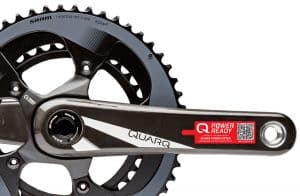 your FTP. Most triathletes can ride 90-95% of their FTP for a Sprint, 85-90% for an Olympic, 80-85% for a 70.3, and 70-75% for 140.6 triathlon events.
your FTP. Most triathletes can ride 90-95% of their FTP for a Sprint, 85-90% for an Olympic, 80-85% for a 70.3, and 70-75% for 140.6 triathlon events.
For example, if my FTP is calculated at 300 watts, then my goal race power for a 70.3 triathlon would be 184-195. That is the only number I have to look at. Instead of thinking about my speed, what my heart rate is, and then what adjustments to make for conditions, I only have to look at the one number.
If I have to climb a hill on the course, I increase the gear to a point that I stay in my power range. The same holds true for wind. My FTP takes in to account everything my body can handle. Sure, on a hill or in the wind my speed might be reduced, but my power will remain the same.
I no longer chase a certain speed on the bike. If I have to put out more watts than my goal race power in order to maintain that speed, then I will end up expending energy I need for the run. Unfortunately, power meters are not cheap. I can write several articles on types, brands, and accuracy of different power meters, so I will not go into that here.
The first thing to do is calculate your FTP. It does not have to be done on an hour bike ride where you go all out for that hour. It can be calculated with one 20 minute ride.
After a solid warm-up, speed to what you believe is your tempo pace. Throughout the 20 minutes, build to a point where you are the absolute maximum effort for the last 5 minutes. You should be pretty spent at that point. Take the average power for that 20 minutes and multiply it by 0.92 and that will give you a good FTP to work with.
If you read any other more complicated articles on power, you will find that there are more specific ways of calculating your FTP that can help to make that number more accurate, but this is the most simplistic.
Now your workouts can consist of working percentages of that FTP for different objectives of your workouts. Speed work may include riding short intervals of 110-125% of your FTP, while for strength, you might ride longer intervals of 90-95%. To understand goal pace FTP, you might work long rides with long stints in variable percentages ranging from 75-90% FTP.
This tip can be looked at as either typical or far-fetched. The popular muscles for biking are mostly the quads and hamstrings, so why not do some squats, some leg curls, and the leg press and be done with it?
The question would be; what are your limitations on the bike? Do you even know if you have limitations? That would bring up the most important question, are you as good on the bike as you want to be? If your answer is “no”, then you have limitations.
The gym is the place to address those limitations and/or weaknesses and then turn them into strengths.
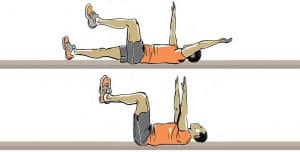 How to integrate Strength Training
How to integrate Strength TrainingDiagnose your limiters by testing your hamstring flexibility, your adductors and abductors, your core strength and leg strength. Then design a program to address those.
I suggest a strength session 2-3 times a week; one session for power, one session for endurance and agility, and a final session for movement and flexibility.
There are plenty of resources online to find the right movements to do for each session. Pay very close attention to the form of the exercise in order to reduce the chance for injury.
Everyone wants to get faster on the bike, but it only comes with work and working smart. Most posts keep re-iterating the same things. Good bike fit, ride more, faster-biking partners etc. I am hoping the points I have shared, are new to you or maybe just a little more specific.
Increasing your pedaling potential, riding hilly courses, completing best effort interval workouts, training with power and strength training are ways I found to get faster on the bike. They are current methods I prescribe to my own clients with great success. I hope they work for you too.
Please comment below with your answers or any feedback you may have.

The previous post was a review of the FD3 Triathlon Series as if it was a product. Below you will find a more detailed account of my personal experiences during the race. Let me know in the comments section if you have any feedback on which you prefer or any relevant comments.
Idina Menzel was singing “Defying Gravity” when my alarm clock announced it was 4:15 a.m. and that it was indeed time to rise. It was the first time in a while, that I wished I could hit the snooze bar on race day. Usually, I wake up with a bounce in my step, but today was a little different. Not that I was not taking it seriously. If training with Jon Noland and Tribal Multisport has taught me anything is that you do not “toe the line” if you are not going for the win.
My coaching methodology is a little different, but I have made a lot of progress with Tribal, so I have stuck with this mentality for my own training. My coaching niche is very different as well. While I train newcomers, or returning clients to the sport, Tribal trains athletes. I have learned a lot in my time with Coach Jon Noland, and I find myself a better coach and athlete the more I do.
Nevertheless, the words were echoing in my head. “If you are not going to go all out when you toe the line, then don’t.” I knew once I got out there and saw my Tribal peeps I would be ready to go.
My head cleared after taking some calories from a pre-workout drink, and inhaling my vitamin supplements. I felt more like myself, so I quickly grabbed all my gear I prepared the night before, racked my bike, and headed out.
I tend to get a kick out of driving to a race. It’s my time to contemplate my strategy and lessons learned while being surrounded by my own environment.
The YouTube soundtrack to the Rise and Shine video was blaring over my radio speakers as I approached the parking lot. The full spectrum palette of colors were being displayed before me in tri-kits, helmets, and bikes as athletes were in all stages of preparation for their own challenges.
My preparation was completed prior to my arrival, so the only thing I did was grab my backpack from the trunk, remove my bike from my rack and stroll into the check-in area.
Triathlete’s tend to always worry about their bikes, and I am no exception. I have been privy to plenty of stories of cyclists colliding head first with other cyclists, inanimate objects and people, where the first words muttered upon becoming conscience were not, “I am hurt” or “Is the other person ok?”, but the fearful question; “Is my bike alright?!” It doesn’t matter if they have a broken arm, leg or collarbone the first question is the same.
With that kind of mentality it is obvious we all tend to be security conscious about our bikes, but I have to say I do not carry that fear with me at a race venue. I tend to believe two things; 1) the event planners have adequate security and 2) there are plenty more expensive bikes than mine around.
Multirace, as always, provided one rack at the entrance to the check-in area in order to allow the athletes to rack their bikes in order to keep the congestion down. Of course, due to the aforementioned insecurities, most of the local triathletes did not utilize the racks, therefore it was ended up quite crowded when I arrived around 6am.
There was a table with two volunteers checking-in athletes and I ended up in a line with approximately 15 people, so I waited about 10 minutes to receive my bib, bike and helmet stickers. However, the swag/t-shirt, body marking and chip distribution stations were less than a minute each, so overall it was a very smooth experience.
I had already bumped into a few other athletes I knew including my own client, Laura, whom would be defending her Age Group First Place finishes she earned in the first two events in this series.
Sweat already started rolling down my arms as I rolled my bike into it’s nesting place among the other carbon fiber speed machines in the transition area. I was fairly quick to set my bike and running shoes, towel, helmet, hat, sunglasses and race belt at the front tire of my bike, when the rest of the crew started to notice I arrived.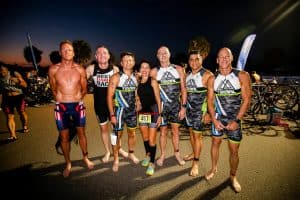
Miles and Ted, decked out in the same Tribal camouflage tri-kit, found me and as we started socializing, Rick, Laura, Nick and Coach Jon had also joined in just as a photographer was strolling by. We didn’t let that opportunity go to waste..
 Pre-Race
Pre-RaceAs we chatted on our way to the beach, the beginning of my race anxiety started to creep into my stomach. No matter how many races I do, no matter how densely populated the field is, the nerves always pop up right before showtime. The only difference is, I know to expect it now.
I jumped in the 83 degree Gulf of Mexico, to warm up and get a feel for the water. It was unusually calm with a low tide which would make the swim fast, but would also allow for some of the less experienced swimmers to walk over the shallow sand bar in the beginning and the end of the swim course. Sometimes, it could make it hard to swim around them. It is one thing to pass, or swim around another swimmer, but a walker is a like an immovable object.
The swim is not my strongest portion of triathlon, but I have really been putting an effort in to become more efficient. Three years ago, I would probably be one of the athletes overjoyed to have places in an 800-meter swim to be able to walk for a bit, but I have realized through my training, and as a coach, it is not efficient and could be detriment.
Running or walking in the water utilizes a great amount of quad and hamstring strength of which is needed more on the bike and run. While, some of the other athletes, including myself, might actually be faster running in the water, it would likely cause a slower bike and run split, therefore not very cost effective.
I turned back toward shore just as one of the volunteers started corralling us out of the water in order to start the festivities. The nerves were still there, but much less intense. Having the opportunity to be enveloped by the water, and feel the grade of tension on my forearm as it pulls through the water always calms me down prior to a start of a race. That feeling is a reminder to my psyche that says, “Yo…Brad…this is nothing you haven’t done a thousand times before, either in training or a race.”
Our Aussie announcer, gave his last instructions on the swim course, the first wave lined up and the triumphant siren of the air horn went off. First, was the open wave, then the under 40 age groups, and at 7:07 am that same horn saturated our ears to send me and the 40 and over age group out into the salty current.
Running out in to the surf was not as easy as jumping into the pool. Low tide kept the water even more shallow than usual, so duck running was all we could do until it was deep enough to dolphin dive and then finally start a good freestyle stroke.
I was able to swim to the first buoy pretty fast and it was smooth sailing from there. I have been working on a long reach with a two-beat kick then driving the hip down as I pull through. I will say it is probably the most efficient technique where I can stay relaxed, but it is far from fast.
During this race, I was surprised as I approached the second buoy and reached to find another foot there. My inner 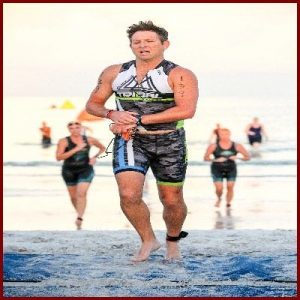 dialogue reacted with “What? I caught someone?”. I moved to the left and passed him. I continued swimming and reached and hit someone thigh. Now this was getting a little crazy. I don’t pass people on the swim, they pass me.
dialogue reacted with “What? I caught someone?”. I moved to the left and passed him. I continued swimming and reached and hit someone thigh. Now this was getting a little crazy. I don’t pass people on the swim, they pass me.
At the final buoy prior to turning to the beach, everything seemed to come to a halt, as people started walking because it was shallow. For a few steps I did the same just to get around some people, but I felt so good I actually wanted to swim. When I found clean water, I continued swimming towards the finish.
My goal was to cross the mat at 15 minutes flat. I came out of the water, crossed the mat and hit the button on my watch as it glowed 15:10. An audible, “Wow, I’ll take it.” came out of my mouth after recognizing how close to my goal. Last month at the FD3 #2, I walked out over 17 minutes, so I was pretty happy at that point.
I must have conquered my efficiency goals, because I had a ton energy to run into T1. Of course I passed my bike and had to double back, but that was only a few seconds. I put on my helmet as I slipped my bike shoes on and slid my bike back and under the bar as I headed to the mount line. I clicked my watch as I crossed the mat at 2:59. A different oral comment came blurting out which was a little negative compared to the first one since my goal was 2:30.
The ride started like a rocket. I was able to pick up speed fast and reach goal power within a few seconds of turning onto the main road. The course would be two loops around Fort DeSoto Park.
Last month, I just wanted a strong bike, and I went out completely on feel. This time I wanted to stay at between 85 and 90% of my FTP (Functional Threshold Power). FTP is the maximum power in watts that can be held for 1 hour, in my terms, from fresh to dead. Currently mine is calculated at 225, so I wanted to stay in-between 191-202 watts.
The wind is usually pretty intense at Ft. Desoto, but we were lucky the last two races of the series. The wind was mild for the previous race and at this point I could feel the cool air against my tri-kit causing that goosebumps sensation, but still not as intense as the last few training rides I participated in here.
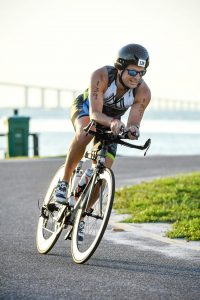 I started passing people down my right side without any challengers coming behind me until I the roundabout, marking the end of the first loop, came into view. At that point the phrase “Good Job Brad, keep it up” came from a passing rider, crystal clear as if he was walking next to me. That rider was my coach, Jon Noland, screaming by on hit BMC Time Trial bike.
I started passing people down my right side without any challengers coming behind me until I the roundabout, marking the end of the first loop, came into view. At that point the phrase “Good Job Brad, keep it up” came from a passing rider, crystal clear as if he was walking next to me. That rider was my coach, Jon Noland, screaming by on hit BMC Time Trial bike.
I kind of expected it. Jon was competing in the Sprint Distance, so he started about 10 minutes behind me and as he swims much faster , and he bikes at around 25 mph versus my speed of around 22, it was only a matter of time, but I was happy to have held him off for almost my first, and his only loop.
The second loop felt a little tougher, but the miles clicked by and I stuck to my game plan. I continued to pass riders, but I did get caught by one and I used him the last five miles as a motivator to push a touch harder.
As the dismount line came closer I loosened the straps of my bike shoes and started to slip my feet out. At the line, I left my shoes in the clips, dismounted and ran to my transition space. I hit the button on my watch as I crossed the mat, but didn’t look at the time, but it ended up 54:35 while my goal was to be under 55 minutes.
Again, I heard the sound of Jon telling me “Relax Brad. Smooth is fast” as I departed transition in 1:03 where my goal was 1:10. It was probably pretty clear my astonishment as “Yeah Baby!” came spitting out of my mouth as I crossed the timing mat.
My thoughts ventured to the last FD3 race. It was extremely hot and I ended up doing a little more walking then I wanted to, so this time even though I had a time goal, my inner monologue was telling me to just keep running. “If you keep running the time will take care of itself.”
The first mile is all on hard packed sand, which was even harder due to the rain experienced the night before. This made 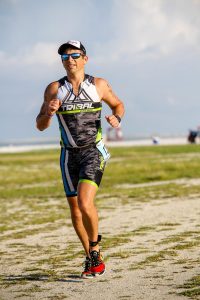 it a little easier to navigate, but the sun was really beating down, and the temperature was starting to rise. As I rounded the corner toward the asphalt path, my watch vibrated and chirped at the first mile. I looked and was happy to have run under a 9 minute mile which lined up with my goal o 55 minutes or under.
it a little easier to navigate, but the sun was really beating down, and the temperature was starting to rise. As I rounded the corner toward the asphalt path, my watch vibrated and chirped at the first mile. I looked and was happy to have run under a 9 minute mile which lined up with my goal o 55 minutes or under.
The first aid station, held out Hammer Heed, and water, which both were deliciously ice cold. I grabbed one of each, downed them and kept running.
My legs started to get heavy, but I knew it was more because I needed three miles for my legs to transition and gain my rhythm. At the 1.5 mile aid station I grabbed 2 cups of water which I downed one and poured the other down my back. That felt so good, as the water was still ice cold.
The turnaround brought me back to that aid station where I grabbed one more cup and doused myself. I could feel the sun heat my skin to an uncomfortable level. The sweat was starting to creep into my eyes, and the suffering started.
I ended up slowing down a bit, but I kept running. As I was passing the finish line in order to start my second loop, I could hear my friend Josh, yelling for me to get going as I walked through the water stop there to pick up some hydration. It was only a few seconds before I restarted on the beach path toward the fourth mile marker.
The second loop was more like the first, which was surprising. I expected to feel like I needed to slow down more, but I didn’t. I had more in me than I thought. When I passed the 5 mile sign, I was relieved, but felt like I even had more to give. I picked up the pace a bit in anticipation of the finish line and then I decided to progressively get faster as that last mile clicked on.
I looked at my watch, thinking 1.2 miles to go, then before I knew it I only had 0.7 to go, then 0.5 and when I could see the finish line, I picked it up. The only thing running through my head was Finish Strong, and the faster I get to the finish, the faster I am done.
I crossed the finish line and realized I was completely spent.
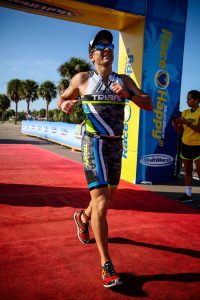
One volunteer gave me a medal, while another detached my timing chip from my ankle, and a third handed me a cold bottle of water.
As I stumbled to the back of the finish section, my client Laura found me. I asked how she did, and disappointingly she told me that she placed third. I was overjoyed, but she didn’t feel the same.
It was noticeable that this race was more populated than the last race, so I knew she would have more competition then the prior races. I asked about her time, and she told me she hadn’t looked yet, so I grabbed her by the arm and pulled her toward the timing table. The volunteers took our bib numbers and gave back slips with our times on them.
Laura PR’d again, and wouldn’t you know it, so did I, by 6 minutes. I couldn’t believe it.
I ended up finishing the run in 55:04 which was pretty much my goal time, and a final time of 2:08:47. That time put me in 8th place in my age group, which I was happy to be in the top 10. I wasn’t going to be standing on the podium, but I was happy with my performance and my PR.
I am not the fastest, but I continually strive to do better than I did the last time. In July I PR’d this race by over 15 minutes and in a month I PR’d again by another 6 minutes. While I did have time goals, of which I was a little off of, I did what I came out to do.
The best part was Laura and my Tribal buddies had a stellar day. Yelena picked up her second Female Over-all win. My former client and Tribal buddy Josh, picked up his Age Group win. Rick won the Masters division. Miles ended up with a 2nd place AG, and of course Jon again took the Overall win in the Sprint.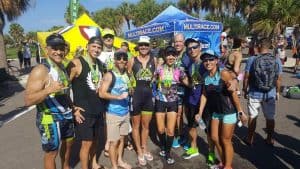
We did find out that since Laura took 1st in the first two races of the series and 3rd in the last, she won 1st place in her age group for the series. That was very cool and I am so proud of her for that accomplishment.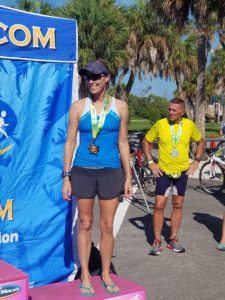
The rest of the time consisted of socializing, and eating as usual.
The experience of this race was stellar. I highly recommend it to anyone who enjoys the Sprint or the International Distance triathlons. Just be prepared for the climate and the possibility of a windy bike and challenging swim.
What did you think of this format of a race review versus my first post? Do you have a favorite race that could be enjoyed by other triathletes or duathletes?
I would really appreciate your feedback in the comments below.
Carpe Vitam! (Seize Life!)